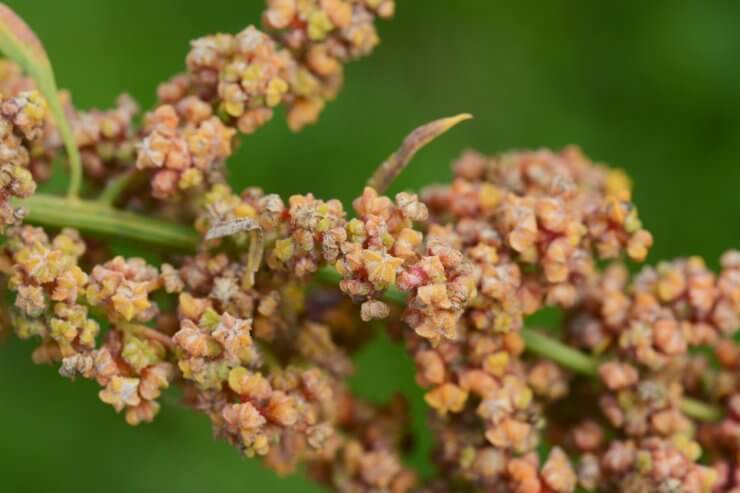
Quinoa plants are somewhat disease-resistant, but not entirely immune
Fortunately, quinoa plants are relatively resistant to plant diseases. But they aren’t completely immune, so it’s a good idea to review how bacteria, fungi, and viruses can harm your plants. Diseases can spread through the soil, water, air, infected tools, animals, and even gardeners themselves.
Typical diseases that affect quinoa include: damping off (Sclerotium rolfsii), downy mildew (Peronospora farinosa), stalk rot (Phoma exigua var. foveata), leaf spot (Ascochyta hyalospora), grey mold (Botrytis cinerea), and bacterial blight (Pseudomonas sp.).
Spot diseases on your quinoa plants sooner so you can treat plants before they are destroyed by disease and can successfully manage symptoms. Here is a three-step approach to keeping vigilant about the presence of quinoa plant diseases:
- Research the Risks. Find out about quinoa diseases that are prevalent in your geographic area. Quinoa is naturally disease-resistant, but not completely immune.
- Examine Plants Daily. Check your quinoa plants every day to be sure no disease symptoms are present or emerging.
- Spot Diseases Early. Catch and treat disease quickly so your plants can recover and thrive.
Quinoa diseases can affect the leaves, stems, crowns, and fruit. Here is what to look for to spot possible infection:
Quinoa leaves—possible disease symptoms:
- dark, gray, or white spots
- curling leaves
Quinoa stems—possible disease symptoms:
- softness or mushiness
- dark, gray, or discolored streaks
- mold or mildew
- stunted growth
Quinoa crowns—possible disease symptoms:
- malformations at the plant crown
- rotting roots
A garlic spray or sprinkling baking soda on freshly watered plants will help destroy the white mold (powdery mildew) fungus.
We’re believers in not using toxic materials in the garden—they can hurt the plants, hurt the soil, damage the environment, and harm you.
Preventive measures to avoid quinoa plant diseases
Try some of these techniques for avoiding quinoa diseases in the first place:
Rotate crops regularly
Many bacteria, fungi, and viruses live in the soil for years and are just waiting to prey on your quinoa plants! Minimize the likelihood of these diseases when you plant quinoa by planting no more than once every three years in the same location.
Avoid planting other crops such as spinach, beets, or amaranth nearby. As members of the same plant family as quinoa, these crops are susceptible to the same diseases and having them nearby could facilitate rapid spread of any developing disease.
Improve your soil composition
Before planting your quinoa, add a good amount of compost or organic matter to improve the soil. Extra nutrients and good aeration help grow stronger plants that will resist disease and infection.
Give your quinoa plants plenty of space
Avoid crowding by thinning seedlings and spacing rows in your quinoa garden. This will allow air to circulate which will help keep quinoa plants dry and disease-free.
Water your garden properly
Because quinoa grows best in dry climates, areas that get heavy amounts of rain make your quinoa more susceptible to disease. Therefore, it’s important not to overwater your quinoa plants. Overwatering and watering directly on the plants—instead of the preferred watering method, directly at the stem on the soil—leads to consistently wet conditions, which allows bacteria, fungi, and viruses to thrive and multiply.
Destroy infected plants
Throw away or burn infected plants. Don’t keep infected plants over the winter in your garden, and don’t throw them on your compost pile. Disease-ridden plants, even when dead, will spread the disease to other plants or even your soil.
Have you had problems with diseases attacking your quinoa plants? What types of problems do you regularly face with your quinoa plants? Please tell us how you treat and prevent diseases from destroying your quinoa crop.


 Previous
Previous

